AI Programming for Beginners: A Step-by-Step Guide to Get You Started
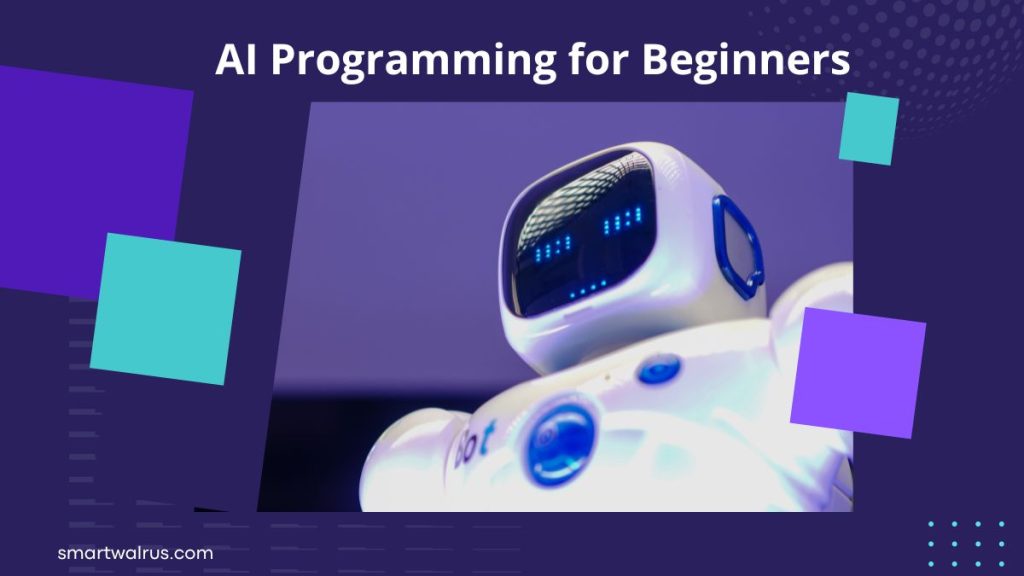
A Beginner Guide to AI Programming
AI programming is a rapidly growing field, and the opportunities for developers with the right skillset are immense. This guide will walk you through the basics of AI programming, from its frameworks to career opportunities.
We’ll also provide you with resources to help you hone your skills, get certified, and find a job in the field. With this guide, you’ll be well on your way to becoming an AI programming expert. So let’s get started!
What is AI Programming?

Artificial intelligence (AI) is a system that can simulate human cognitive functions like learning and problem-solving. It is an interdisciplinary field that builds on computer science, mathematics, and other disciplines to create machines that can perceive, understand, and behave with human-like creativity and complexity.
As AI programming is an evolving field, there isn’t one set definition. However, generally, AI programming is the process of creating computer software that’s able to simulate human intelligence.
This involves teaching computers to solve complex problems, make decisions, and learn new things. For instance, the most common AI applications are chatbots, customer service agents, and virtual assistants.
READ MORE: AI and the Job Market: Will Robots Take Over Our Jobs?
Learning AI Programming Tools and Frameworks
The best way to get started with AI programming is to learn the tools, frameworks, and programming languages that developers use. With the right tools, you’ll be able to focus more on solving problems and creating innovative solutions. So let’s take a look at the most important tools, frameworks, and programming languages in AI.
1. Python
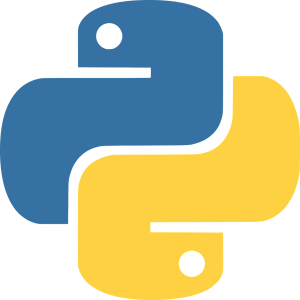
Python has powerful libraries and frameworks that make it easy to develop AI projects. It also provides a clear syntax, which makes it easier to read and write code.
Libraries such as TensorFlow, PyTorch, and Keras, enable developers to quickly and easily develop AI solutions. Furthermore, Python has a large and supportive community, so getting help or advice is easy. All these features make Python a great choice for developing AI programs.
Tensorflow
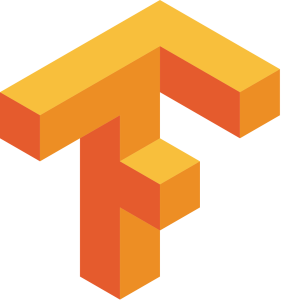
TensorFlow is an extensive open source software library for numerical computation, particularly well-suited for large-scale machine learning. It was originally developed by Google Brain and released under the Apache 2.0 open source license. TensorFlow provides a flexible architecture for building, training, and deploying machine learning models.
You can use TensorFlow to build, train, and deploy a wide variety of machine learning models, such as neural networks and deep learning models, support vector machines (SVMs), random forests, and gradient boosting machines (GBMs).
In addition to machine learning applications, you can use TensorFlow to create powerful computer vision applications. It provides APIs for image recognition and object detection that you can use to create applications such as self-driving cars, facial recognition systems, and more.
PyTorch

PyTorch is an open source machine learning library for Python, developed and maintained by Meta. It provides a wide range of features that make it an ideal choice for training and deploying deep learning models. Plus, it has great scalability, making it suitable for large-scale deployment across multiple devices.
With PyTorch, you can create neural networks and other machine learning models to tackle tasks such as image classification, natural language processing, audio processing, and time series forecasting. Additionally, it has strong support from the open source community, which helps to ensure that the library remains up-to-date and well-maintained.
Scikit-learn

Scikit-learn provides a wide variety of machine learning algorithms and tools for building predictive models. With Scikit-learn, you can use supervised learning methods such as regression and classification to analyze data and make predictions. You can also use unsupervised learning methods such as clustering to discover patterns in the data.
Scikit-learn also has a library of built-in metrics for evaluating the performance of your models so you can develop improved predictive models. Additionally, Scikit-learn offers a wide range of tools for optimizing models and tuning hyperparameters, giving you the flexibility to choose the best model for your data.
Microsoft Cognitive Toolkit
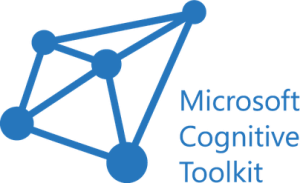
Microsoft Cognitive Toolkit (CNTK) is a deep learning toolkit that enables developers to easily build, train and deploy state-of-the-art machine learning models. With its comprehensive set of features and algorithms, the toolkit can be used to create complex neural network architectures and help developers gain insights from large datasets.
The toolkit can be used to develop deep learning models for a wide range of applications, including image and speech recognition, natural language processing, computer vision, and robotics. It also provides tools for training, evaluation, and deployment of models in production environments.
Keras

Keras is a deep learning library that provides a high-level API for creating powerful neural networks. It has become popular due to its ease of use, flexibility, and scalability. With Keras, you can build and train deep learning models with minimal effort and time. It allows you to quickly prototype your ideas and quickly iterate on them.
Keras comes with a number of pre-trained models that can be used right out of the box. Each one has been trained on the ImageNet database. This will allow you to quickly get started on your own projects. Finally, Keras also supports distributed training, allowing you to scale up your models and train them on multiple machines simultaneously.
2. R Language

R is a versatile tool for machine learning that can be used to develop and evaluate predictive models, build machine learning algorithms, and visualize data. With R, you can build sophisticated predictive models to accurately predict future outcomes, and more.
R also provides a wide variety of packages and libraries (like caret, data explorer, and dplyr) that make it easy to work with data and create machine learning models. You can use these packages to quickly train models, process and clean data, tune hyperparameters, and evaluate models.
Additionally, R provides a wealth of functions and features that enable you to easily perform feature engineering, dimensionality reduction, and other preprocessing tasks that are essential for building effective machine learning models.
3. Java
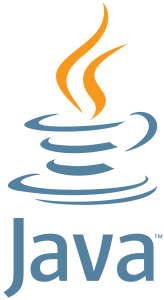
Java provides an easy-to-use and accessible platform for programming, allowing developers to write code quickly and efficiently. Additionally, Java has a wide range of libraries available for use in machine learning applications.
This includes libraries for natural language processing, data mining, deep learning, and more. With these libraries, developers can create sophisticated machine learning algorithms and models, enabling them to make predictions, identify patterns, and perform other complex tasks.
Deeplearning4j
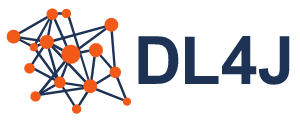
Deeplearning4j is an open-source, distributed deep learning library written for the Java Virtual Machine (JVM). It provides an extensive set of components and tools to develop, debug, deploy and optimize deep learning applications.
Deeplearning4j is designed to be highly scalable, making it an ideal choice for large-scale applications, such as those involving big data and complex networks. With Deeplearning4j, you can create and train neural networks for a variety of tasks, including computer vision, natural language processing, time series analysis, anomaly detection, and more.
4. C# and C++
C# is a popular choice for developing machine learning applications due to its flexibility and robustness. It provides an extensive library of classes and functions for developers to work with, making it a great choice for creating sophisticated machine learning models and algorithms.
MLPack
MLPack is an open-source C++ machine learning library designed for rapid development and research. It provides a wide range of machine learning algorithms and tools, including supervised and unsupervised learning methods, such as regression, classification, clustering, dimensionality reduction, and more. It also offers a variety of model selection techniques, including cross-validation, grid search, and more.
Accord.net
Accord.NET is an open-source machine learning framework. It provides a comprehensive set of algorithms for classification, regression, clustering, and dimensionality reduction, as well as providing support for specialized deep learning architectures such as Convolutional Neural Networks (CNNs) and Recurrent Neural Networks (RNNs).
5. IBM Watson
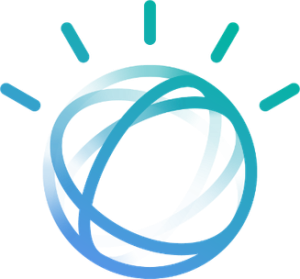
IBM Watson is an artificial intelligence platform that allows organizations to gain insights from their data and make more informed decisions. With Watson, businesses can leverage machine learning to create predictive analytics solutions, identify patterns in large datasets, and draw correlations between data points.
You can use IBM Watson to generate natural language understanding and computer vision applications. So not only will you be able to recognize objects, faces, and text in images, but you will be able to allow users to interact with the system using their own words. This makes it easier to ask questions and receive answers quickly.
Finally, IBM Watson provides access to pre-trained models, such as Watson Discovery, which you can use to quickly build and deploy applications. IBM Watson also provides a suite of tools for building, training, and deploying machine learning models such as Watson Machine Learning, Watson Studio, and Watson OpenScale. These tools provide users with the ability to quickly develop, test, and deploy AI-powered applications.
Resources for honing your AI programming skills
There are many ways you can hone your skills as an AI programmer. One way is to read blogs and tutorials written by experts. There are many blogs and articles out there that break down the basics of AI programming, making them accessible to beginners. For example, one of the most popular is Towards Data Science, which is a Medium publication for sharing AI concepts and ideas.
Additionally, you can join communities, like Reddit’s /r/ArtificialIntelligence and /r/MachineLearning, to connect with other AI programmers, share your knowledge, and ask questions as you’re getting started.
Finally, another great way to hone your skills is by building projects. You can do this on your own or find a group or mentor that can help you as you’re getting started. Doing some hands-on work will help you gain valuable experience and help you get your foot in the door with potential employers.
Conclusion: Start Your Journey to Becoming an AI Programming Expert
If you’re interested in learning AI programming, now is a great time to get started. With the rapid advancement of technology and more companies investing in AI, there will be many job opportunities in this field.
But in order to succeed as a beginner in this field, you’ll need to understand the basics of AI programming and hone your skills. Throughout this guide, we’ve covered the basics of AI programming, as well as how to find careers in this field and hone your skills as a beginner.

Related Artificial Intelligence
The Ultimate Data Science vs Machine Learning Guide
From Sci-Fi to Reality: Exploring the Evolution of Artificial Intelligence
A Guide to Python Libraries for Machine Learning
10 Revolutionary Applications of AI in Household Settings
How To Become An Artificial Intelligence Engineer
Top AI Data Analytics Tools You Can’t Miss in 2024
AI and the Job Market: Will Robots Take Over Our Jobs?
10 Free Face Recognition Software